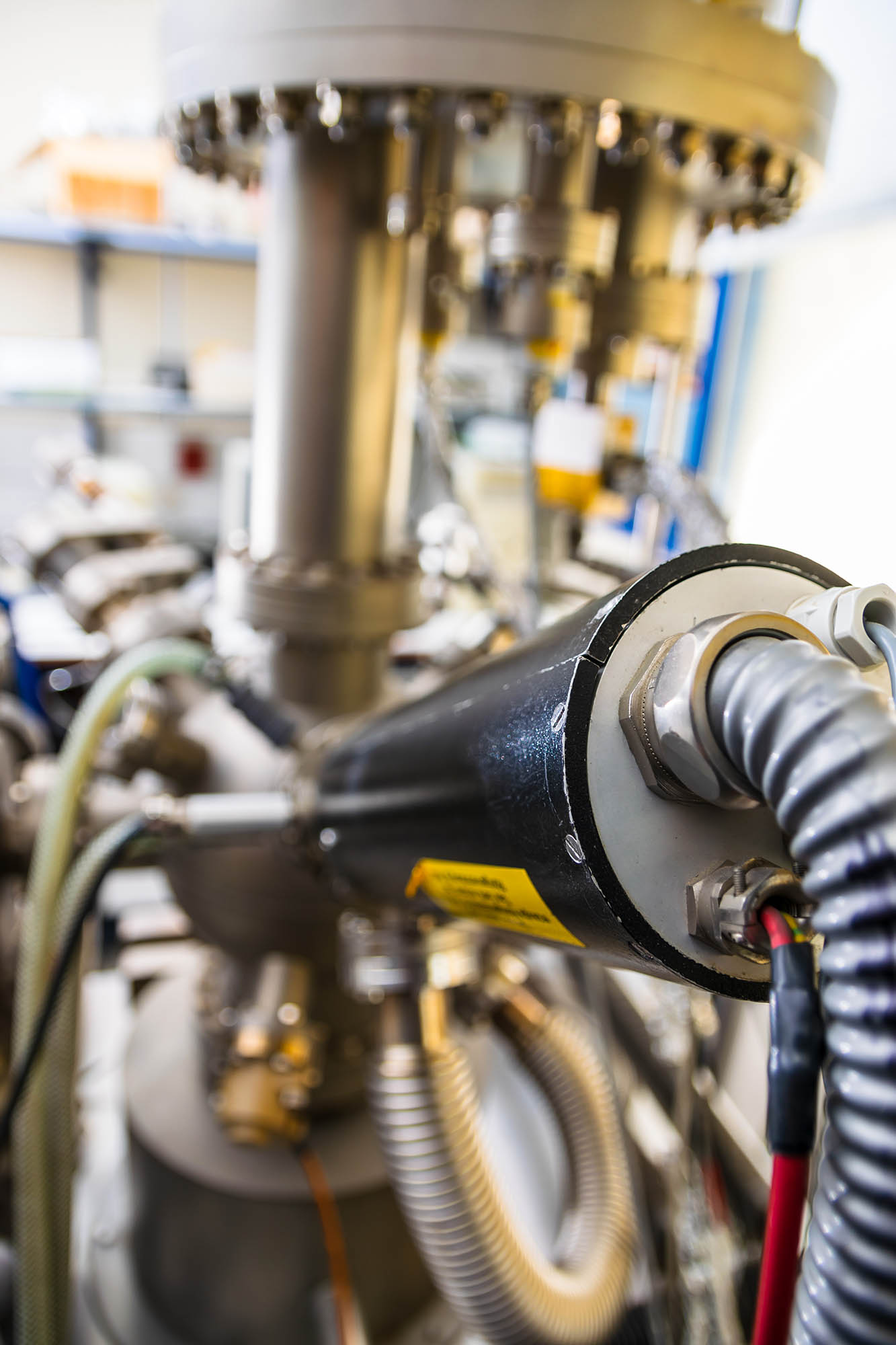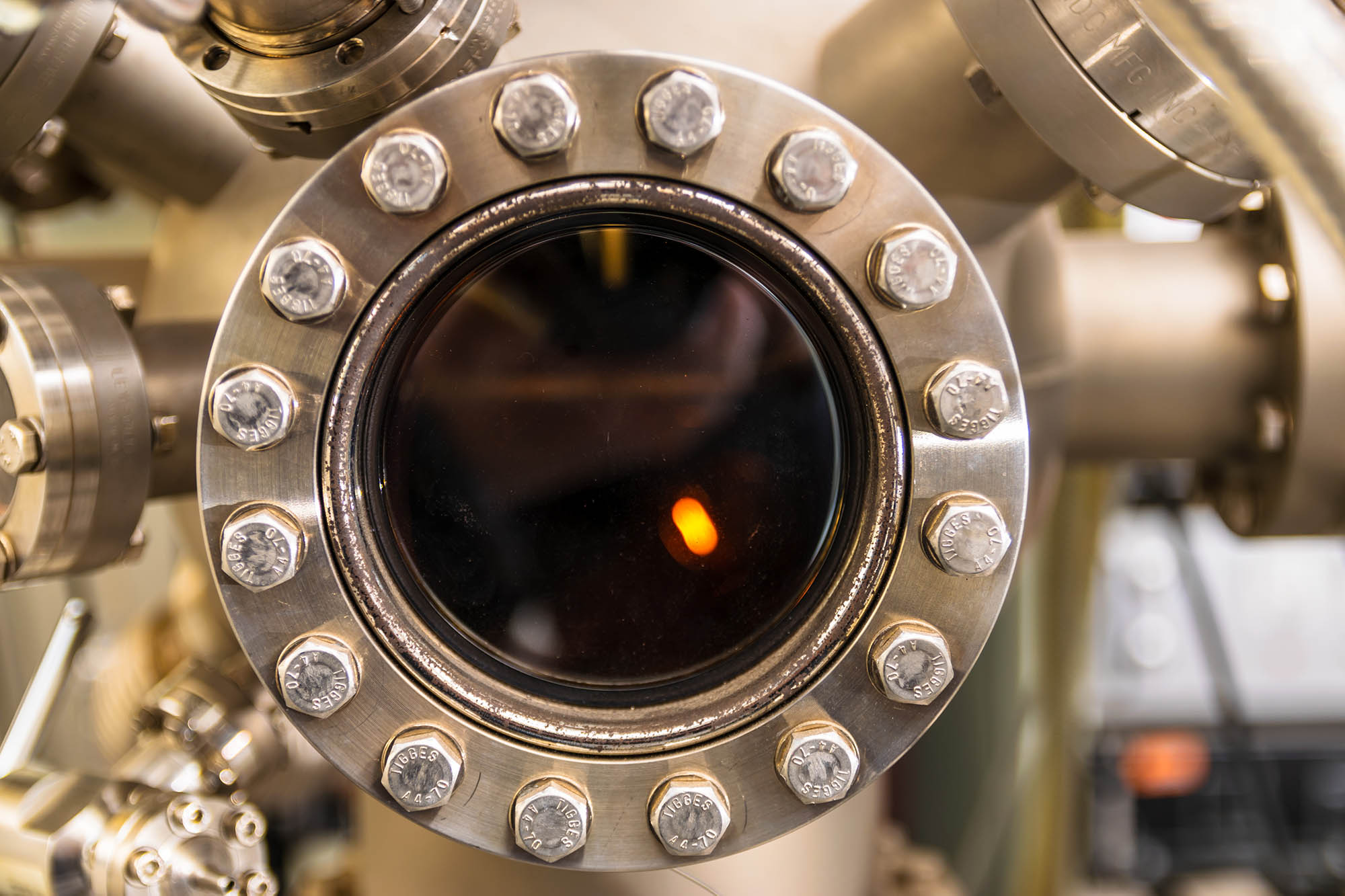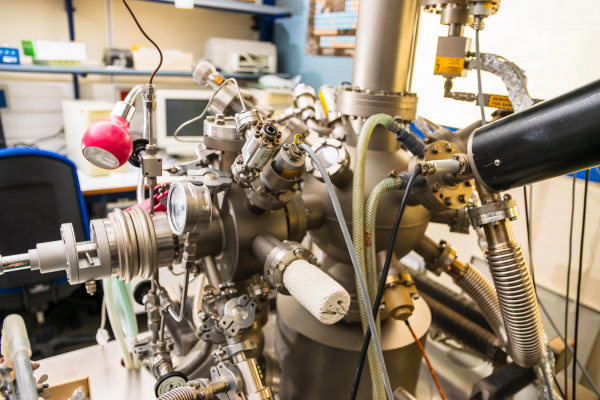
Similar with XPS, Ultra violet photoelectron spectroscopy (UPS), using UV radiation (with photon energy of 10-45 eV) examines valence levels. The Work function of the materials and the Ionization Potential of an organic material can be determined. The information depth is ~3nm.
By stepwise deposition of a material onto a substrate the determination of the energy level alignment at the interface can be determined by XPS/UPS techniques. Combination of the methods can reveal the appearance of an interface dipole or band bending effects.
Electron energy-loss spectroscopy (EELS) is a surface analytical technique that measures the change in kinetic energy of electrons after they have interacted with a specimen. The low-loss or valence region of an EEL spectrum (< 50 eV) provides valuable information about the band structure and in particular about the dielectric properties of a material (e.g., band gap, surface plasmons). The information depth is ~3nm.

Moreover, the Ultra High Vacumm Chamber is equipped with:
(a) Ion gun for sputtering the surfaces (for contamination removal) and for controllable induce defects onto graphene sheets,
(b) a stainless steel sample holder able to be heated up to 650 °C in order to thermal reduction of oxides, GO, e.t.c.,
(c) gas inlet systems in order to surface exposure under various gases and controllable pressures ranging from 10-6mbar up to 1bar.



